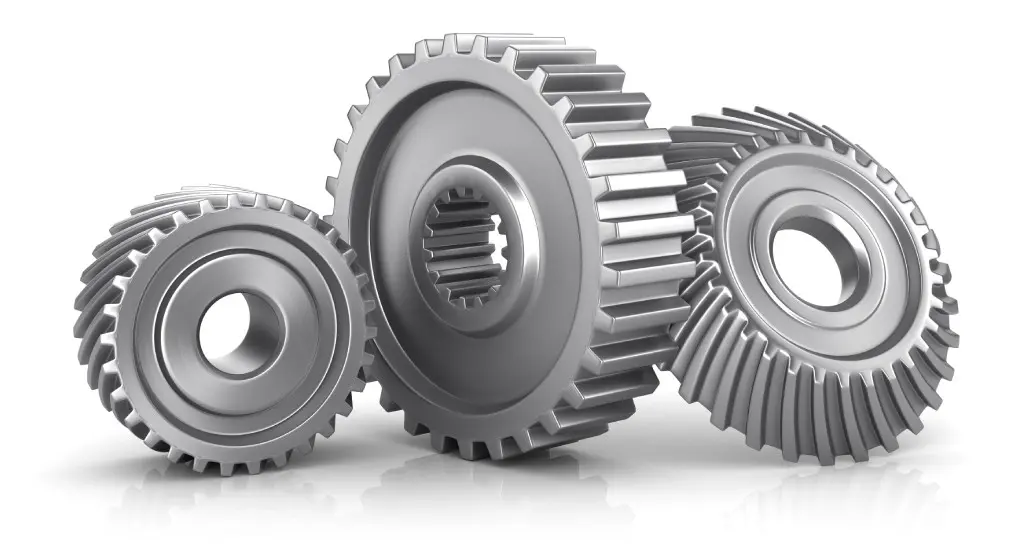

Gears can be divided into various types, mainly cylindrical, bevel and other types.
 Fellowsa1-big_format-webp.webp)
Different types of cylindrical toothing: a) straight teeth, b) helical teeth, c) herringbone teeth (double-helical teeth), d) arched teeth [1]
Cylindrical gears with external teeth are produced with hobs, gear milling cutters, end milling cutters and seldom with Fellows shaper cutters.
Cylindrical gears with internal toothing are produced with Fellows shaper cutters, broaches and end mills. Due to the requirement to have an extension arm and the complexity of machining, hobs are rarely used, but it is possible.
 Fellowsa2-big_format-webp.webp)
Different types of bevel toothing: e) straight teeth, f) helical teeth, g) arc teeth [1]
Bevel gears are produced using planning blades, blade segments and heads by various methods, including Oerlikon and Gleason.
 Fellowsa3-big_format-webp.webp)
Other types of toothing: h) toothed rack, i) ring gear (crown gear), j) cylindrical gear with internal toothing [1]
Figure 2.5 shows examples of special toothing from left to right: straight-tooth rack, ring rack (ring gear), cylindrical gear with internal toothing.
The rack can be produced using gear milling cutters and a group cutter (complex set of many combined gear milling cutters binded together in one piece, structurally very similar to a large hob cutter)
The crown gear can be produced with gear milling cutters and end milling cutters, the cylindrical gear with internal teeth wheel can be produced mainly with Fellows shaper cutters and broaches.
Construction and basic features characterizing the toothed gear
The gear consists of two or three basic components:
-
toothed rim containing teeth,
-
hub,
-
and, optionally, a connector joining the two above.
 Fellowsa4-big_format-webp.webp)
Construction and characteristic elements of the toothed gear [1]
The basic values characterizing the gear have different markings depending on the source, according to Ochęduszko they are:
-
m – module, division of the pitch diameter and the number of teeth,
-
dp1/2 – pitch diameter - divides the tooth into two parts, tip, and root,
-
ds – root diameter
-
dw – diameter of the tip,
-
hg/ha – tooth tip height,
-
hs/hf – tooth root height,
-
g – tooth thickness,
-
lw – tip clearance,
-
lo – circumferential clearance,
-
b – width of the gearing.
Additionally, the distance between the centers of the mating wheels is marked with the symbol ar.
 Fellowsa5-big_format-webp.webp)
Characteristic diameters of mating gears [1]
In addition, the overall tooth height y is a significant factor. Standard teeth have this factor equal to 1, resulting in a tooth head (tip) height equal to modulus and a tooth root height equal to modulus increased by a calculated tip clearance lw of 0.2. Thus, the total tooth height is the product of the multiplication of number 2.2 and the modulus. Teeth are modified according to the following types:
-
low – y<1, h<2,2m,
-
normal – y=1, h=2,2m
-
high – y>1, h>2,2m
Additionally, the teeth can also be distinguished:
-
zero - the difference between the height of the root and the tip is equal to the tip clearance lw,
-
corrected or wild - any other modifications..
Sources:
[1] - Ochęduszko K., Koła zębate, tom 2 wykonanie i montaż, Wyd. VI (reprint), 3 dodruk, WNT, Warszawa, 2015, ISBN 978-83063623-05-0

